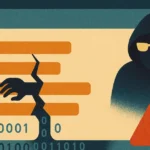The Hidden Risks Behind Unmanaged Digital Access
Shadow identities are user or machine identities that exist within an organization’s environment but operate outside of the visibility or control of IT and security teams. These identities often originate from unauthorized SaaS sign-ups, abandoned accounts, misconfigured integrations, or third-party access that isn’t properly governed.
While shadow IT refers to unsanctioned tools and applications, shadow identities are the credentials and access entitlements tied to those tools—or worse, hidden within sanctioned environments but untracked. These identities pose a growing risk because they often remain unmanaged, unmonitored, and unprotected by core identity and security policies like SSO, MFA, and least privilege access.
The result? An expanding attack surface made up of forgotten admin accounts, overprivileged service accounts, and stale credentials just waiting to be exploited.
Where Do Shadow Identities Come From?
Shadow identities emerge in many ways—some seemingly harmless, others purely accidental. For example:
- An employee uses their corporate email to sign up for a new SaaS tool without IT approval.
- A former contractor’s account is never fully deactivated after offboarding.
- A service account is created for a one-time task and never removed.
- A third-party integration is granted excessive permissions, but no one monitors it.
These identities may persist long after their intended use, and because they aren’t tracked through traditional identity governance tools or federated through SSO, they become invisible vulnerabilities.
Unlike traditional identities, shadow identities lack ownership, lifecycle management, and enforcement of identity policies—making them low-hanging fruit for attackers.
Why Shadow Identities Are a Security Problem
In today’s identity-first security model, every account—human or machine—is a potential point of compromise. Shadow identities significantly increase an organization’s risk exposure because they:
- Bypass centralized identity management and MFA policies
- Often have excessive or outdated privileges
- Go undetected during audits or security reviews
- Provide easy entry points for attackers using stolen or reused credentials
- Remain active even after users leave the organization or apps are abandoned
If left unaddressed, these identities can be leveraged for lateral movement, data exfiltration, or privilege escalation.
How to Detect and Remediate Shadow Identities
Detecting shadow identities requires visibility beyond your IAM or IGA tools. Traditional identity governance platforms often only manage what’s been formally onboarded. That’s where identity security platforms come in—offering real-time discovery of unknown accounts, federated or not, across SaaS apps, endpoints, and cloud environments.
To address shadow identities, organizations should:
- Continuously discover all identities—human, non-human, and unknown
- Map accounts to owners, apps, and usage to determine if access is still required
- Enforce identity policies such as SSO and MFA retroactively
- Automate cleanup of unused, orphaned, or high-risk accounts
- Monitor for anomalous behavior tied to suspicious or unmanaged identities
FAQ: Shadow Identities
Are shadow identities the same as shadow IT?
Not exactly. Shadow IT refers to unsanctioned apps or services used without IT approval. Shadow identities are the accounts and credentials tied to those services—or to other unmanaged systems—that operate outside of IT’s control.
Do shadow identities include machine identities?
Yes. Service accounts, API tokens, and other non-human identities can also be shadow identities if they’re created without proper governance or visibility.
Why don’t traditional IAM tools catch shadow identities?
IAM systems typically manage known and onboarded identities. Shadow identities often exist in apps or systems that aren’t integrated with IAM or are outside of the organization’s SSO and identity lifecycle processes.
What’s the risk of leaving shadow identities unchecked?
These accounts can be exploited by attackers, especially if they have stale credentials, unnecessary privileges, or access to sensitive systems. Because they’re unmonitored, they’re harder to detect in the event of a breach.
How do I get visibility into shadow identities?
Use identity security tools that extend beyond IAM and IGA to provide full discovery and monitoring of all accounts across SaaS, cloud, and endpoint environments—whether they’re federated or not.


